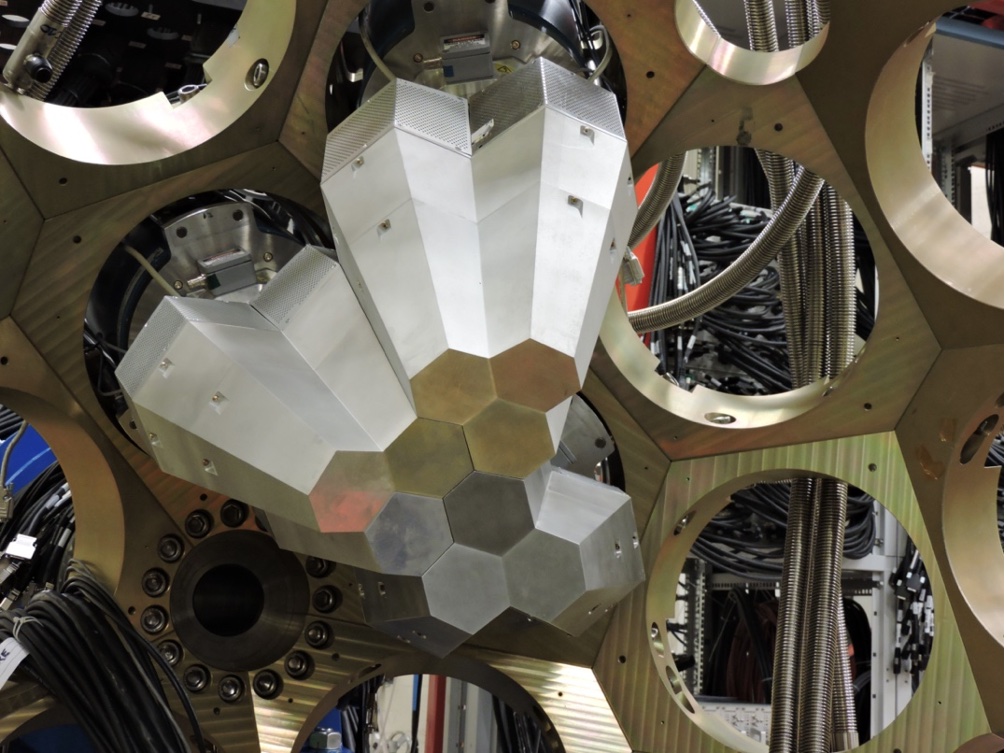Successful installation of the first three AGATA triple clusters at Legnaro National Laboratories: our eyes to look into the nucleus
The first experimental campaign with the gamma-ray tracking array AGATA will start at Legnaro National Laboratories (LNL) this spring. The campaign is led by the GAMMA group in the framework of a large international collaboration involving the main European countries and it will use the intense stable beams provided the Tandem-ALPI-PIAVE accelerator complex. AGATA is the most advanced gamma-ray detector in the world. It is made of segmented hyper-pure germanium crystals, and it is conceived as a modular detector array which, once completed, will host 60 triple clusters. This instrument allows one, from the analysis of the electric signal shapes coming from the germanium crystals, to track the single gamma ray inside the crystal with a spatial resolution of few mm.
AGATA will enable the exploration of exotic nuclei produced in heavy-ion collision with unparalleled efficiency and sensitivity. In a first phase at LNL, AGATA will be coupled to the PRISMA large-acceptance magnetic mass spectrometer and to other ancillary detectors for charged particles, neutrons and high-energy gamma rays or for the measurement of lifetimes of excited nuclear states. The first three triple clusters of AGATA have been successfully installed together with the system to support their functioning and the electronics for signal treatment. By the beginning of the experimental campaign, up to 13 triple clusters will be installed, covering about one fourth of the solid angle. This number will then be extended in coming years until arriving at a coverage of half of the solid angle for the subsequent phases of the experimental campaign.
